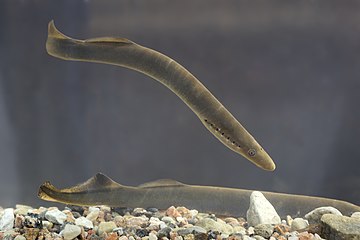August 2024 Nottinghamshire Heritage Events
- Posted in:
- GetInvolved
If you’re looking for something to do with the family this school holiday or just something special to do during the summer, take a look at our list of heritage events running in the county this August:
Every weekend of August: Head to Sherwood Forest for the special annual Robin Hood Festival scheduled for every weekend of August. Each weekend features a different themed event: ‘Knights Ride Back into Sherwood’ (3rd and 4th August), ‘Fantasy in the Greenwood’ (10th and 11th August), ‘Inspiring Wildlife’ (17th and 18th August), and ‘The Outlaws’ Return and Nottinghamshire Day Festival’ (24th, 25th and 26th August). Entertainment includes ‘displays of jousting on horseback and medieval hand-to-hand combat, archery, historical re-enactment, music, comedy, children’s entertainment and much, much more’. Please be aware there is a parking charge of £15. For more information on the festival weekend events, click here.
Throughout August: ‘The D.H. Lawrence Festival is coming very soon with a huge variety of events across heritage, arts and culture, music and literature and more’ at the D.H. Lawrence Birthplace Museum as well as other locations across Eastwood and Broxtowe. For the full festival information, click here.
1st – 3rd August: Creswell Crags is hosting a variety of prehistoric workshops which gives you the opportunity to learn and practice a range of techniques used to manipulate natural material once practiced by our prehistoric ancestors with professional archaeologists. Tickets cost £95 per person. Here is the full list of workshops:
- 1st August: ‘Discover the ancient use of textiles through an exploration of techniques and discussion with experimental archaeologist, Sally Pointer. You will also make an antler needle (from naturally shed antler) using flint tools to take home’. Book your place on the Introduction to Prehistoric Textiles Workshop here.
- 1st August: ‘Create your own Stone Age jewellery using a range of techniques that would have been available to makers over 10,000 years ago’. You’ll begin with an introductory talk into personal ornamentation in the Stone Age. Next, take a closer look at what artefacts have been found in Britain. Then, you’ll doing some experiential archaeology, working with stone age tools to discover how these artefacts would have been made to create jewellery of your own to take home. Book your place on the Prehistoric Jewellery Making Workshop here.
- 1st and 3rd August: ‘Discover the art of the oldest craft in the world: Flintknapping. The aim of the day will be for attendees to go home with a variety of different stone tools they have made, new flintknapping skills and a new appreciation for prehistoric technology.’ Book your place on the Flintknapping Workshop here.
- 2nd August: ‘Bone and antler has been used from the start of prehistory up to the modern day for making tools and ornamentation. People in prehistory had a close relationship with the animals these resources came from, what does that tell us about the past? There is a huge selection of prehistoric objects including harpoons, needles, pins, spear points and fish hooks to name a few - which will you choose? Your tools to make these replicas will include sandstone files and flint tools, just like in the Stone Age’. Book your place on the Bone and Antler Carving Workshop here.
- 3rd August: ‘Explore the evidence for nets in prehistory, compare ancient and modern tools, and learn how to set up a rectangular or round net before starting work on a natural fibre net bag to take home with you’. Book your place on the Net Making Workshop here.
3rd August: Southwell Minster has ‘teamed up Southwell Workhouse and the Town Council to bring you a Family Fun Day in celebration of 140 years since becoming a Cathedral town. There will be a Victorian theme throughout, with costumed characters to meet, tower tours, games, crafts and activities provided by the Minster team and Southwell Workhouse. The local shops and businesses are getting involved with a shops trail through the town, and we hope it will be an anniversary for everyone to enjoy’. No booking required and entrance to the Cathedral is free (Attendance on the Tower Tours requires booking, click here). For more information, visit the event page here.
15th August: At the National Holocaust Centre and Museum, ‘join Jonathan Smith as he offers a talk on his extensive collection of vintage postcards, pre- and post-Holocaust.’ Contemporary postcards showed ‘images of diverse and settled Jewish communities across Europe and the world. Postcards also show these in both prosperous or poverty-stricken detail.’ Please note that you will require both an admission and an event ticket (event tickets are £10 for adults). Not suitable for children under 14. Book your place here.

Above: Flint Knapping. (By Tonto National Monument - Flint-knapping Demonstration, CC BY 2.0)
Heritage sites hosting kids activities in the summer holidays:
From 27th July to 1st September: ‘Enjoy a range of events and activities for a great day out at Newstead Abbey and Gardens’. Entry into the historic house will be free for kids this summer and events include pirate days and pirate trails. Find out more here.
From 30th July to 30th August: Head down to the Bassetlaw Museum for amazing daily events for kids. Events include Notts Wildlife Trust Activities, CHAOS Science Roadshow, Legos days and many craft days. All events are free, and no booking is required. Find out more about what events will be on here.
